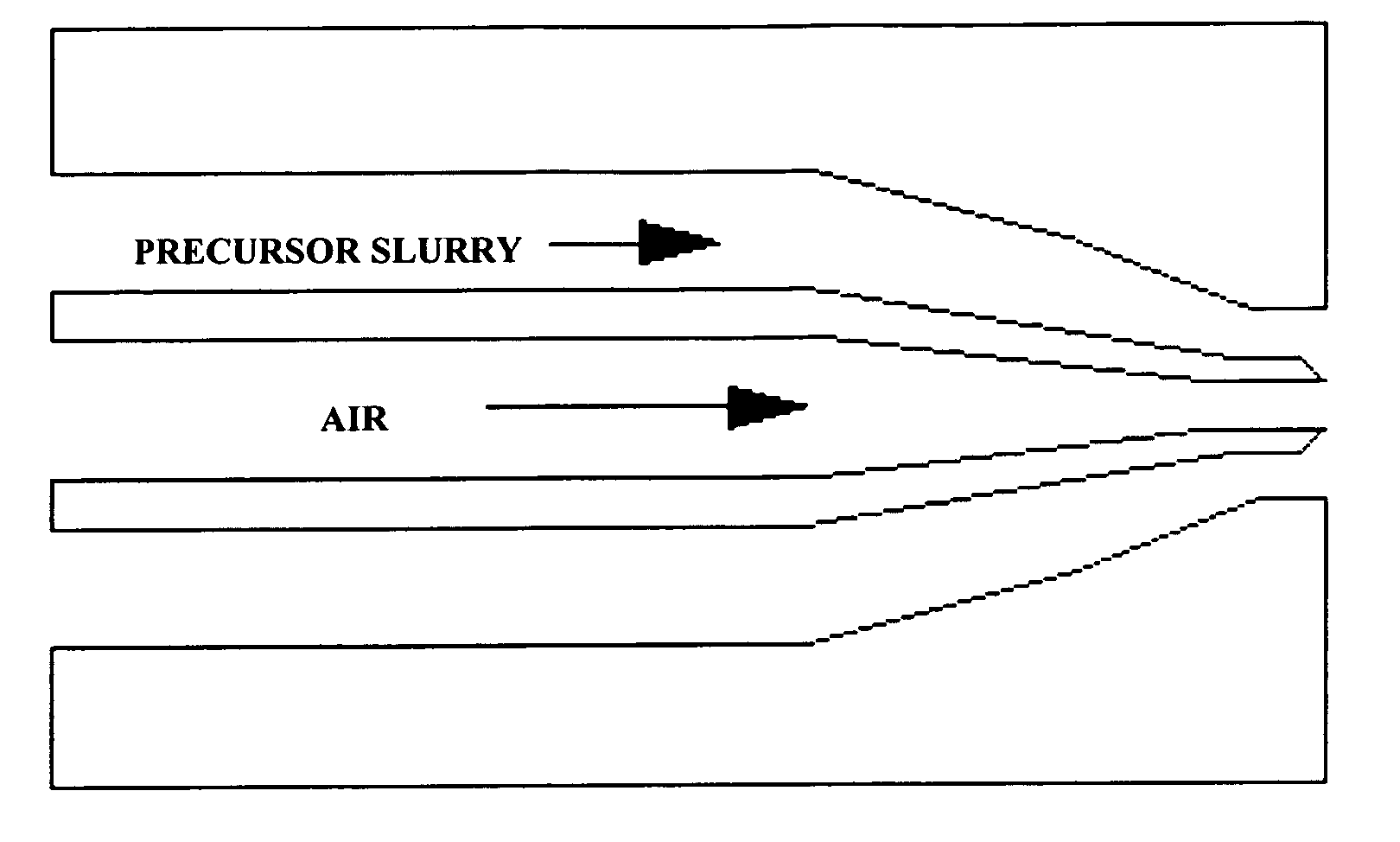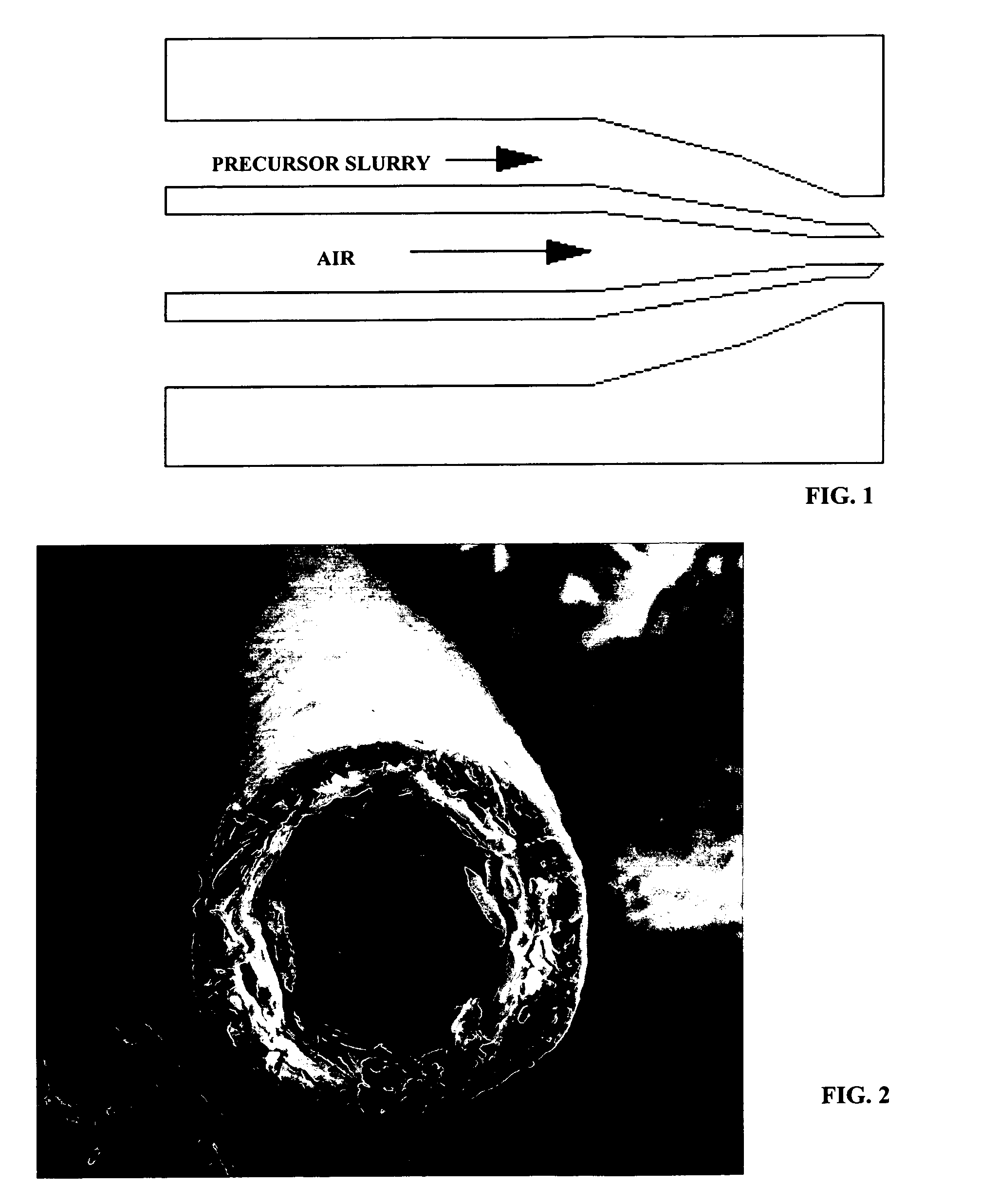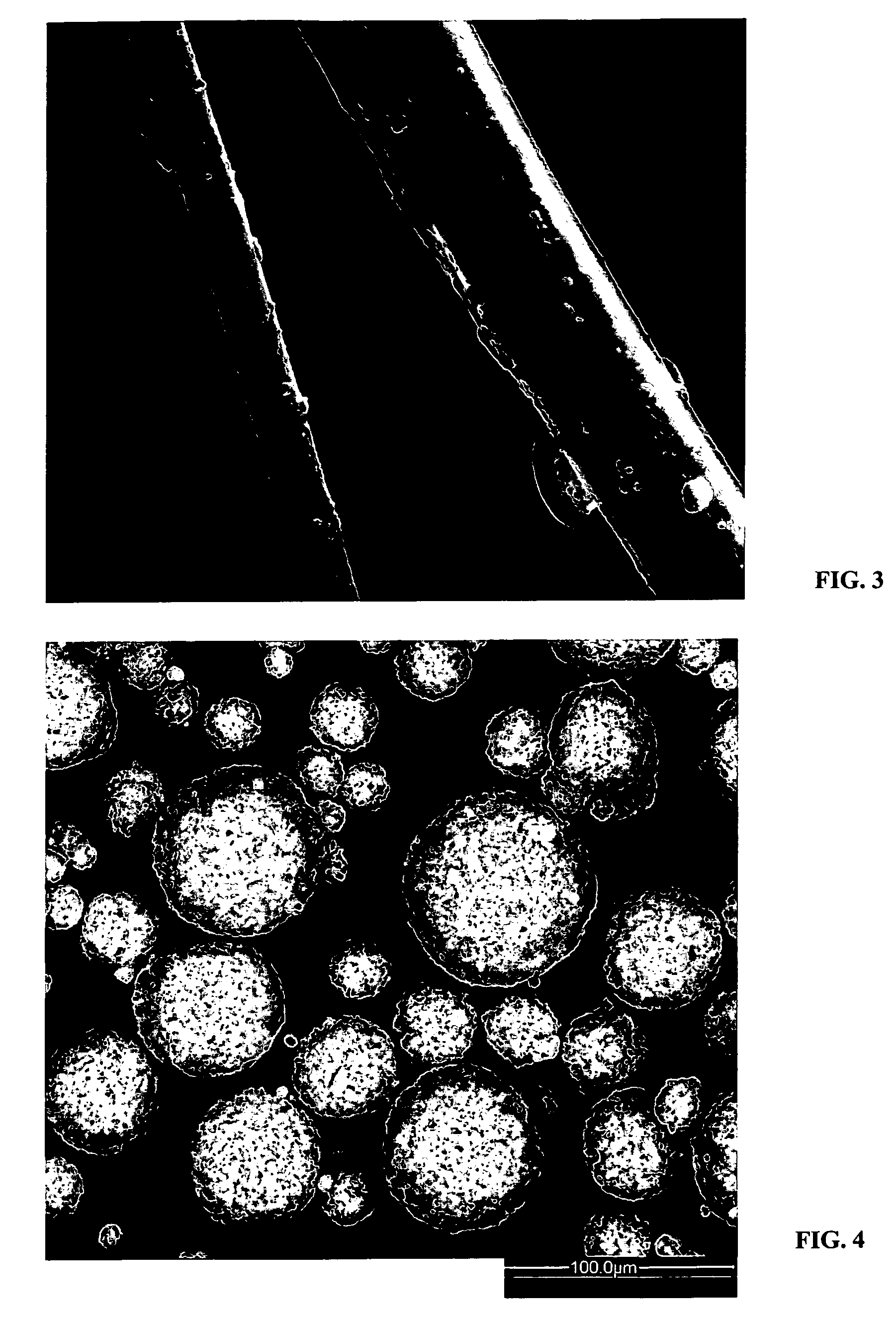Geopolymeric particles, fibers, shaped articles and methods of manufacture
a technology applied in the field of polymer particles and fibers, can solve the problems of high cost, high efficiency, and many materials used in the production of conventional fibers and microspheres cannot typically withstand high service temperature without significant degradation
- Summary
- Abstract
- Description
- Claims
- Application Information
AI Technical Summary
Benefits of technology
Problems solved by technology
Method used
Image
Examples
example 1
[0094] In a first example, a precursor is formulated to have a predetermined curing time for a given intended process condition. All precursors in this example were formulated from Metakaolin clay, sodium hydroxide, sodium silicate and water, but provided in different proportions, using different processing temperatures, and / or with different curing times.
[0095] At least four geopolymeric precursor formulations were prepared, each by mixing 15 g of sodium hydroxide pellets with 32.5 g of liquid PQ Corporation N-type sodium silicate, followed by the addition of water to form a mixture. The amount of water for each formulation is shown in TABLE 1. Heat was generated due to the exothermic reaction of sodium hydroxide with water. The mixtures were then cooled to a given temperature, as shown in TABLE 1, and followed by the addition of 40 g of metakaolin clay. The composition of the clay, as determined by XRF, is shown in TABLE 2. Each formulation had a different cure time, as shown in ...
example 2
[0099] This example illustrates a method of making substantially spherical geopolymeric particles. A precursor was made by mixing 150 g of sodium hydroxide pellets with 325 g of liquid PQ Corporation N-type sodium silicate, followed by the addition of 400 g of water to form a mixture. Heat was generated due to the exothermic reaction of sodium hydroxide with water. The mixture was cooled to 25° C. and then added with 400 g of metakaolin clay. The mixture was thoroughly mixed using a mechanical mixer. The precursor mixture was in a slurry form and atomized into discrete droplet particles in a spray dryer. The applied heat in the spray dryer evaporated the excess water and activated polymerization and hardening. The droplet particles were converted to dried geopolymeric spherical and near round particles. The resulting geopolymeric particles are shown in FIG. 4. The resulting geopolymeric particles were found to have excellent properties, including flowability, strength, and durabilit...
example 3
[0101] In this example 4 g of zinc metal powder was deliberately incorporated as a blowing agent into the precursor formulation of Example 1. As a blowing agent, zinc metal powder autogenously reacts with water, releasing hydrogen gas. Following the same method of making of Example 1, the resulting product was light weight geopolymeric microspheres, in which most of the spheres contained rounded voids inside them. A representative example of the geopolymeric end-product of this example is shown in FIG. 6.
PUM
| Property | Measurement | Unit |
|---|---|---|
| Temperature | aaaaa | aaaaa |
| Temperature | aaaaa | aaaaa |
| Length | aaaaa | aaaaa |
Abstract
Description
Claims
Application Information
 Login to View More
Login to View More - R&D
- Intellectual Property
- Life Sciences
- Materials
- Tech Scout
- Unparalleled Data Quality
- Higher Quality Content
- 60% Fewer Hallucinations
Browse by: Latest US Patents, China's latest patents, Technical Efficacy Thesaurus, Application Domain, Technology Topic, Popular Technical Reports.
© 2025 PatSnap. All rights reserved.Legal|Privacy policy|Modern Slavery Act Transparency Statement|Sitemap|About US| Contact US: help@patsnap.com



